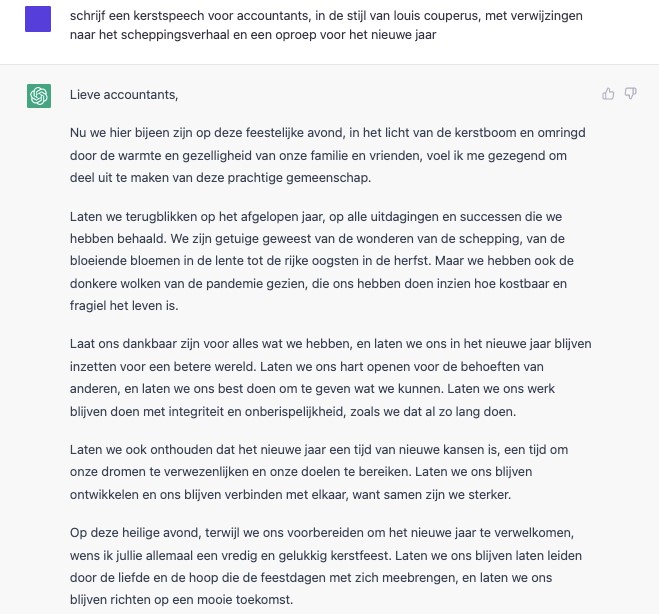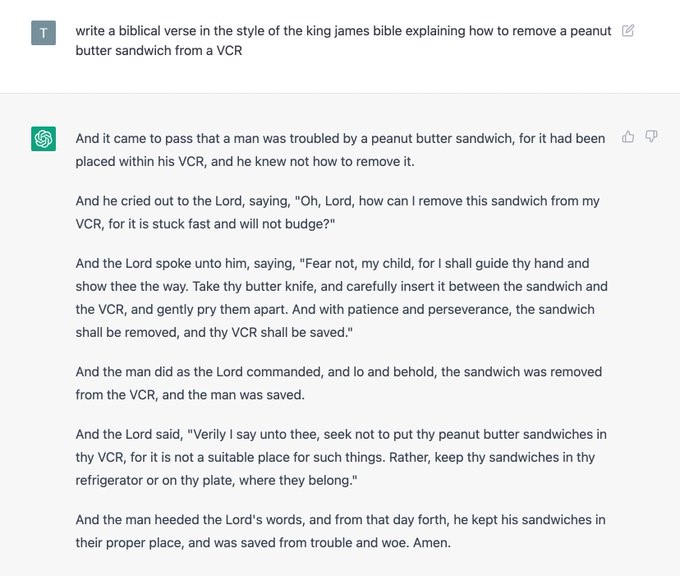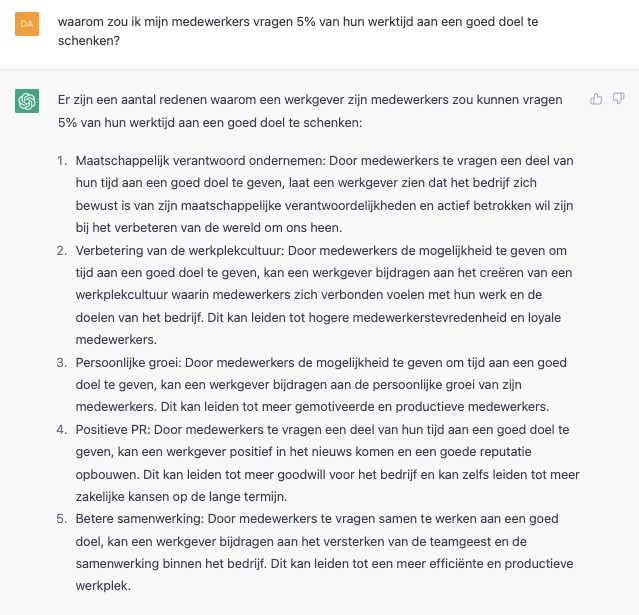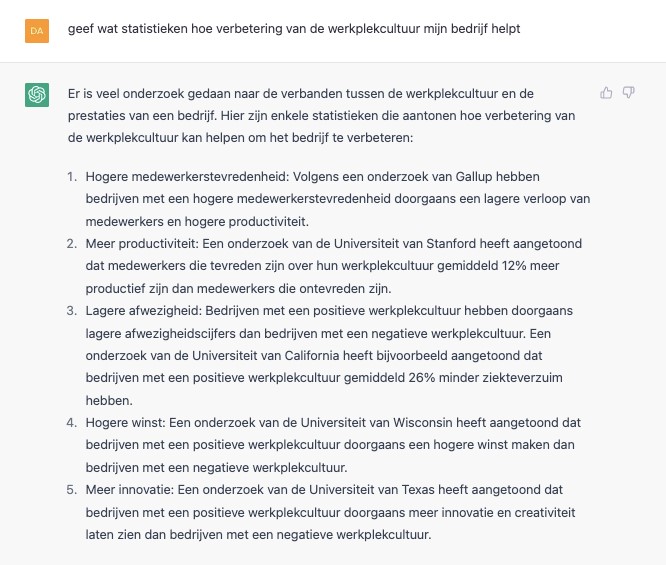Four tips on how ChatGPT can give you input for your (Christmas) speech
There's a "new kid in town. Everyone is talking about it. People are coming from far and wide to check it out. Because this would be really special; unleashing a true revolution. Some foresee the end of time, others a golden future.
No, this is not an alternative beginning of the Christmas story. We are talking about ChatGPT, OpenAI's futuristic chatbot. A self-learning digital brain that you can bombard with all your questions and commands and then generate unprecedentedly good texts at the touch of a button. Coherent answers to your questions, as well as essays, blogs and speeches.
Is this a blessing or a curse? No one knows, everyone has an opinion. But whether this ultimately turns out to be HAL 9000 or is going to save us from ruin, let's take advantage of it for now more than anything else.
Therefore, four tips on how ChatGPT can give you input for your (Christmas) speech.
1. Give your assignment multiple layers
Never before has a chatbot returned such well-composed pieces of text to a question or assignment. Yet it soon becomes clear that it has its limitations. The system is particularly good at pulling together and reciting what people have ever produced. But it has no creative or comprehension ability itself. Ask it to write a Christmas speech for your employees and you will be served a somewhat wooden text, full of clichés. And the personal touch, essential to touch your audience, is also logically missing.
How can you still get something useful out of it? Build your assignment out of several sub-tasks. That way you let the tool connect different types of information and you get more surprising results.
See, for example, ChatGPT's response to my assignment "Write a Christmas speech for accountants, in the style of Louis Couperus, with references to the creation story and a call for the new year."

Or take, this one, which went viral in recent weeks: "Write a biblical verse in the style of the King James Bible explaining how to remove a peanut butter sandwich from a VCR."

2. Ask ChatGPT for arguments for or against a position statement
Where Google matches your question as best it can with existing texts, ChatGPT gives you customized answers. You can get an overview of themes and angles related to your topic within seconds by wrapping your topic in a thesis statement and asking the tool to provide arguments for and/or against it.
Also useful if you have a message that you know will meet resistance: "Give me an overview of the arguments against the statement...".
With that you don't have a full speech, you do have inspiration.
Here is an example of how that works.

Then you can zoom in on one or more of these arguments:

3. For extra inspiration, give your assignment (also) in English
ChatGPT is fed billions of pieces of text. Quite a few more English than Dutch. If you give your assignment in English, the tool can draw on millions of times more data, yielding better and more interesting results.
4. Lard your presentation or speech with unique visuals
Have you pulled together a wonderful story and are looking for unique visuals to go with it? That's fortunate, because OpenAI has a great tool for this as well: ChatGPT's sister DALL.E 2. It works the same as ChatGPT, but generates images instead of text. Ideal, because no matter who writes the text, a picture still says more than 1,000 words.
ChatGPT is a fascinating toy. And clearly it has unprecedented potential and is going to cause quite a stir. But right now, it is primarily an inexhaustible resource that can inspire the human spirit. Fortunately..
Speak to Inspire wishes you happy holidays! Or, as DALL.E 2 would put it:


 De kracht van de oneliner: hoe één zin je hele performance kan maken
De kracht van de oneliner: hoe één zin je hele performance kan maken

 +31 20 4204068
+31 20 4204068

 info@speaktoinspire.nl
info@speaktoinspire.nl